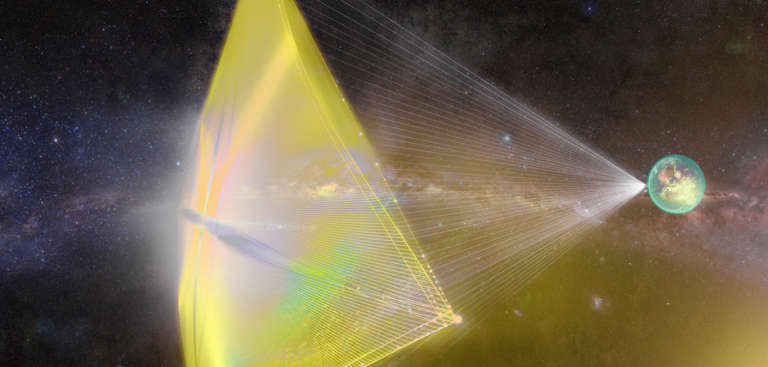Planetary Radio • Aug 02, 2016
Interstellar Dreams Turn Real
On This Episode

Philip Lubin
Professor of Physics for University of California, Santa Barbara

Travis Brashears
Undergraduate Student for University of California, Berkeley
Philip Lubin and his former student Travis Brashears have had quite a year. Their bold plan to send tiny probes to nearby stars is now supported by NASA and the Breakthrough Starshot $100 million dollar initiative. Hear their amazing story. Emily Lakdawalla tells us August promises to be an exciting month. Bill Nye finds reason to celebrate science through findings that indicate Martian gullies weren’t carved by liquid water. We’ll head for central Africa with Bruce Betts for a surprising relationship with the Moon.

Related Links:
- “A Roadmap to Interstellar Flight”
- Breakthrough Initiatives
- Humanity Chip campaign on Kickstarter
- Photon Propulsion Calculator
- What’s Up in the Solar System, August 2016 Edition
- The Planetary Society’s New Membership Program
This week's prizes are a copy of “The Martian” signed by Andy Weir, a Planetary Society rubber asteroid and a 200-point iTelescope.net astronomy account.
This week's question:
What spacecraft flew past comet 19P/Borrelly in 2001?
To submit your answer:
Complete the contest entry form at http://planetary.org/radiocontest or write to us at [email protected] no later than Tuesday, August 9th at 8am Pacific Time. Be sure to include your name and mailing address.
Last week's question:
What is the highest award given by NASA? It can only be earned by astronauts, the President awards it in Congress’ name, and does so on the recommendation of NASA.
Answer:
The answer will be revealed next week.
Question from the week before:
If you landed at the same latitude and longitude on Earth as Apollo 11 did on the moon, what country would you be in?
Answer:
The same latitude and longitude of the Apollo 11 landing would put you deep in the Democratic Republic of the Congo on Earth.


 Explore Worlds
Explore Worlds Find Life
Find Life Defend Earth
Defend Earth


